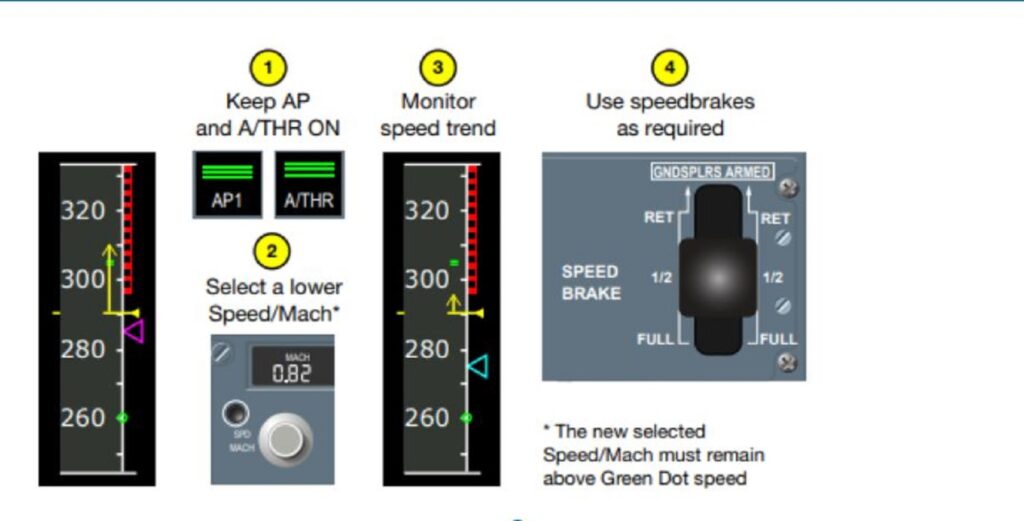There are many possible situations.
In high speed jet aircraft, the pilots need to keep a very close eye on the speed indication, particularly when cruising at high altitudes. When in cruise, the aircraft speed is usually just a few knots below the vmo/ mmo (Maximum operating speed/ Maximum operating Mach). So, a speed excursion is highly likely if left unmonitored. The A320 for instance has an maximum operational mmo of 0.82 Mach and we cruise in the range of 0.78 to 0.80 Mach. So, the margin you have between the actual speed of the aircraft and the maximum speed is very minute.
One of the main factors that affect the aircraft speed in cruise is the changing winds. If you experience a sudden strong headwind or if you were initially flying in a tail wind and if it were to suddenly die out, the aircraft speed can go up. This is inertia at work. Then, there is turbulence. This can either be caused by flying close to strong weather cells or it can also be in encountered in clear air in what we call Clear air turbulence (CAT). So, both changes in wind gradients and turbulence can cause changes in the indicated air speed of the aircraft. To avoid a speed exceedance in these situations, the pilots should react promptly. If you are flying on autopilot, the first action should be to reduce the target cruise speed. This will give you a higher margin to the maximum operating speeds. If this does not work, then you can extend the speed brakes. One important thing to note is that, when a lower speed is selected, you should not reduce it below the minimum maneuvering speed of the aircraft. At high altitudes such an action can easily put the aircraft in a continuous declaration.
The Airbus overspeed recovery procedure.
Even though, a speed exceedance inflight is something of big deal, it is important that you remain calm and think things throughout so that you do not make a mistake in the recovery procedures. The vmo/ mmo are operational speed and not design speeds. So, there is no immediate danger of aircraft damage if you were to inadvertently go above the maximum operational speeds. Most airliners are designed to fly and tested way above the vmo/ mmo.
The other most common type of speed exceedance is flap overspeeds. This happens, when pilots unknowingly extend the flaps at a higher speed than the recommended vfe(Maximum flap extended speed). There are many safe guards to prevent this. In almost every aircraft, the flap speeds are placarded in the cockpit and as flap speeds are an aircraft limitation, the pilots are supposed to know them by memory. In modern aircraft, the vfe speeds are marked on the aircraft speed tape or display. On top of this, in a multi crew environment, both pilots should confirm the speed before the flaps are extended. When the pilot flying calls for flaps, he should check if the speeds are acceptable for that flap setting. And the pilot monitoring (who sets the flaps) should also cross check with his speed indication and call out ‘speed checked’ before the flap lever or handle is moved. Unlike the vmo/ mmo the vfe has a very little margin. That is, even very small exceedance above the vfe can damage the flaps.
You might think that overspeed situations happen very rarely but I have read a document by Airbus which states otherwise. According to their stats an overspeed occurrence occurs once every 1400 flights. It is something to think about.
Author – Anas Maaz
Airline pilot. Airbus A320/ A321






